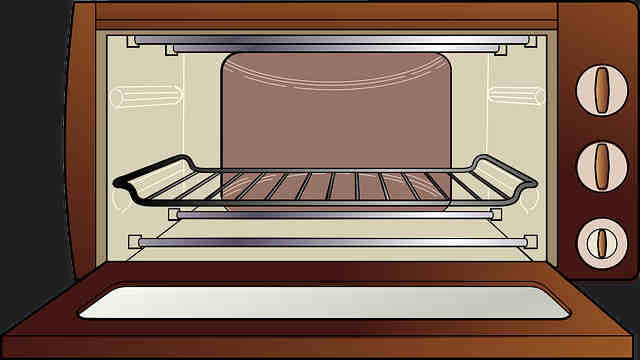The microwave is one of the most comfort and easiest ways to cook. And while you can easily mimic almost any kind of oven recipes in there, not all materials that prove well in the torrid perimeters of oven are actually safe to put in the microwave. One such item is the good’ol aluminum foil that always makes our grilling experience a thing to remember. You’ll learn why in a moment.
Can you put aluminum foil in the microwave?
While completely safe to use in certain situations, it’s best to never put aluminum foil in the microwave at all. It can trigger spark which can permanently damage the inside of the microwave when left unattended. It can also make whatever you’re cooking to heat up unevenly which is in fact, the most striking issue regarding putting aluminum foil in the microwave.
This gets even worse when the food item in question is many inches thick such as a whole turkey or chicken, or a salmon as thick as an adult’s fist. The best alternatives in this case would be parchment paper or wax paper, or any container and wrapper that is labeled safe for use in the microwave.
Why is aluminum foil not safe to use in the microwave
If you ever had the idea of pooping aluminum foil into the microwave to steam the potatoes well, but for some reason, had an afterthought and decided to google to make sure you’re not making a mistake, then bravo! You’ve actually done yourself a huge favor. This could be the option that saves you the cost of forking out hard earned cash on a new microwave.
First, aluminum foil is a metal, so putting it in the microwave (especially those having metal shelves, walls or turntables) can cause it to spark just like any metal twist or cutlery would, when you accidentally popped in there.
The spark is called arcing and it’s caused when the electromagnetic fields of the microwave strike and barter their wave status for an electric one there by inducing electric currents in the foil and also a high electric potential on the sharp and pointy surfaces on it. This high potential then cause arcing to occur at areas having lower potential and also the surrounding air. Note though, that several other reasons exist as to why a microwave can arc, and a metallic or reflective surface such as the foil isn’t always going to be the cause.
Sparking like this, without any measures put in place to stop it, i.e. consistently using foil even after one sees the sparking effects going on, can cause permanent damage to the interior of the microwave which would mean forking out shit ton of money to repair or buy a new appliance. Except if the neighbors are kind enough to share their personal microwave with you!
But thankfully, if you’ve made a mistake and accidentally microwaved remnants of foil or metal in the oven, you can quickly reach out for the wire behind and unplug. The microwave should be up and running smoothly again after taking out the metal culprit.
The second thing about microwaving with foil is the poor heating effect that it cause. Any food completely wrapped with a layer of foil will find it difficult to absorb microwave radiation for cooking.
In case you didn’t know, microwave ovens work by emitting low energy radiation called microwaves which target molecules in food (especially water and salt) and cause them vibrate.
This vibration cause friction which further cause heat that cooks the food. So because foil is a metal and it’s also reflective, using it as a wrapper for food items in the microwave means that it’ll block and stop most of the radiation from reaching the food. So whatever is being cooked will end up of fairly heated and raw in many areas.
Another problem related to ‘foiling’ foods in the microwave is the damage it can cause to the oven. Allowing the magnetron to keep sending tons of microwave radiation without actually having any food molecules to target is an effective way to damage the interior for good. Putting in other words, completely wrapping foods in foil and popping them in the microwave is just as bad as leaving an empty microwave run for an entire cooking duration. That’s an extremely foolish thing to do!
What are the exceptions for using foil in the microwave?
There are of course times when foil can come in handy in the microwave. Like when you need to cover less thick portions of poultry to prevent overcooking when thicker areas are getting done slower.
For example the drum stick and wings on a whole chicken that cook pretty fast compared to the rest of the chicken. You can use a tiny layer of foil over 60 to 70 percent of these parts to reduce the amount of radiation that gets to them.
This in turn, will slow down their cooking time relative to other parts. But this methods is still prone to arching, as metals — small as a scrap, can still send sparks flying all around the cavity. The safest way to use foil in this manner is to ensure only little scraps are used and even then, that they never make any contact with the turntables, shelves, and the walls (especially if they are metals). They should be no closer than 1 inch from the walls.
Another exception is for food items packaged in aluminum container labelled safe for microwaving. Feel free to pop them in the oven as per the manufacturers microwaving instructions. They should fare well and not spark or damage the interior. One thing to bear in mind though, is that if the packaged food in question is more than 2 inches thick, it’s best to replace the container with a microwave safe plate or bowl for proper cooking or reheating.
Lastly, if you’re one of those that have upgraded to a convectional microwave oven, you can use foil in the microwave during the convection cooking which simply works like a normal convection oven. But foil must never be used during the microwave heating since then, it’s will interfere with the cooking process by causing arching and making food articles cook unevenly.
What wrappers or containers can you use in place of foil in the microwave?
Parchment paper: Most people intending to use foil in the microwave would want to use it as they would on the grill or in the oven – as a packet. They may also want to employ foil to cover the top of food items to prevent splatter, dirt accumulation or promote even cooking. Parchment paper of course is a fair game and substitute when it comes to all these. It can wrap salmon for pouch cooking, prevent splatter and perfectly promote even heating of food due to its superb heat sealing properties.
For cake or bread baking, parchment paper can also be used to line the bottom of a microwave safe tray.
Wax paper: Wax paper can also substitute parchment paper or foil in all these applications. But there are instances when wax paper cannot do well for instance when the food in question is high in fat or oil, or is easily prone to burning i.e. potatoes. Read here on how to properly use wax paper in the microwave oven.
Plastic wrap: Plastic wrap is also an excellent substitute for foil in the microwave. When it’s labelled microwave safe, it can be used for all purposes outlined for parchment paper above except that in its own case, vents should always be made to allow steam escape (you never want any steam to scrub the flesh out of your skin), and the plastic wrap must not touch the surface of the food as it may migrate toxic substances at high temperatures.
Lastly, any container labeled microwave safe is another substitute for aluminum foil in the oven. If a material doesn’t have a microwave safe label, and you aren’t sure exactly where it stands, you can always tests to see whether or not it’s microwave safe according to the United States Department of Agriculture (USDA).
Simply pour one cup of water in a glass cup and place the cup close to (but not touching) the material in question, and put in the cavity. Microwave on HIGH for one minute and notice if the material heats up. If yes, do not use it in the microwave because it has elements that reflect or conduct current. If not, you can use it to reheat your left overs of makes some glazed meat loaf in a mug.

